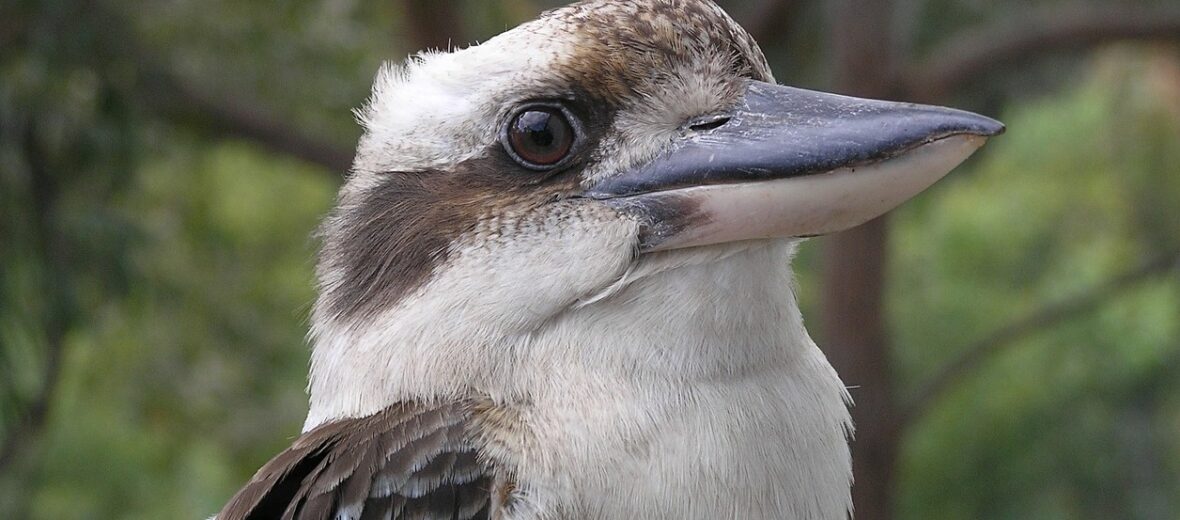
The laughing kookaburra is the largest of the kingfishers. They are also the loudest! They have a loud call that sounds much like a laugh and they release this call right around twilight. There are 4 different recognized species of kookaburra: Rufous-bellied, Spangled, Blue-winged, and of course the Laughing. The laughing kookaburra was once called the giant kingfisher. The year-round laughing song advertises territorial ownership, as does the chuckle, which is also used to find missing family members.
First the Stats…
Scientific name: Dacelo novaeguineae
Weight: Up to 11 ounces
Height: Up to 18 inches
Wingspan: Up to 25 inches
Lifespan: Up to 20 years
Now on to the Facts!
1.) They call the forests, open woodlands, or on the edges of plains in Australia and Tasmania their home.
2.) The laughing kookaburra eats insects, reptiles, frogs, and rodents. They actually seldom eat fish, even though they are technically kingfishers.
3.) When they spot prey, they will swoop down, grab it with their bill, then carry the food back to a perch where they will beat it several times against the branch to kill and tenderize their prey. Then the food is swallowed whole, head first.
4.) Laughing kookaburras have been known to occasionally prey on chicks and ducklings on farms.
5.) Getting all their moisture from their food, the kookaburra never needs to drink water!
But wait, there’s more on the kookaburra!
6.) Females lay 1 – 5 eggs, which are looked after by a group composed of parents and older siblings. Young kookaburras generally stay with their parents to help look after the subsequent clutch.
7.) Although known for being an Australian bird, kookaburras are also found in New Guinea.
Did you know…?
They are also known as the bushman’s alarm clock.
8.) All Kookaburras are rated as being Least Concern on the IUCN Red List.
9.) These birds are monogamous (mate for life)!
10.) The kookaburra use the same nest hole each year.
Now a Short Kookaburra Video!
Also, check out the Critter Science YouTube channel. Videos added frequently!
Want to suggest a critter for me to write about? Let me know here.



